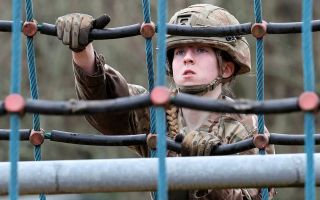Ukraine: Five ways Russia has adapted ahead of expected summer offensive
Russian forces in Ukraine are continuing to make small territorial gains along the eastern front as Kyiv waits for new supplies of US military aid.
On his Telegram account, Ukraine's commander-in-chief gave a sobering assessment, stating the situation had worsened and his forces were under attack across the frontline.
The Russian military remains tactically poor, but it is proving to be adaptable.
So what are they doing differently right now? What lessons has Russia learned?
Forces News' Ukraine correspondent Simon Newton looked at five key areas where Moscow's forces have adapted as Ukraine braces itself for a possible Russian summer offensive.
Use of air power
Russia has been quick to seize on Kyiv's dwindling air defence arsenal, and in battles like the one around Chasiv Yar, Su-25s have provided close air support to Russian infantry.
Moscow's also using more stand-off weapons, including glide bombs.
This year alone the Russians have dropped 3,500 of them on Ukrainian troops – a 1,600% increase on last year.
MiG-31 interceptors are also keeping Ukraine's air force at bay, capable of operating inside Russia and launching long-range R-37M missiles that can hit Ukrainian jets 125 miles away.
Russia's also using more loitering munitions like the Lancet, with the latest version carrying a 5kg thermobaric or high explosive warhead.
Speed of adaptation
Another change seems to be the tempo of Russian adaptation itself, with commanders getting quicker at implementing changes.
They've created two combined arms armies, an aviation corps and 50 other military units since the start of the war.
Russia's now able to replace all its battlefield losses, with its factories producing 100 main battle tanks a month.
Relocating Black Sea Fleet
Another area where Russia is adapting is the Black Sea.
For the first time in months, it launched Kalibr cruise missiles from two Kilo-class submarines.
The UK MOD says the Russian navy has improved its port facility at Novorossiysk, 400 kilometres further east than Sevastopol.
That's allowing Moscow to redeploy the Black Sea Fleet and use it as a base for missile frigates and submarines.
Electronic warfare
The Russians have also been good at adjusting their electronic warfare.
At the start of the war, a Russian cyber-attack crippled Ukraine's military communications network.
Kyiv switched to Elon Musk's Starlink system, which uses thousands of low-powered satellites.
Russian jamming equipment proved useless at blocking it, but here too they've learned.
Russia now deploys lots of short-range jammers instead, including the RP-377, which it fits to vehicles including BMPs and T-80 tanks.
These don't target the satellites, but instead block the Starlink terminals and jam signals to Ukrainian radios and the radio link to FPV drones – although their effectiveness is questionable.
Attrition
Finally, not so much a lesson learned but more a confirmation for the Kremlin of Russian doctrine.
The UK MOD says 415,000 Russian troops have been killed or injured in Ukraine – about 87% of its total pre-war personnel.
Vladimir Putin has increased the size of the military to 1.3 million, with Russia accepting losses that Ukrainian forces couldn't sustain.
This focus on mass, however costly, has brought gains - and the Russians have made attrition work.
Ukraine, of course, is countering many of these adaptations and coming up with its own, but Russia is undoubtedly learning from past mistakes and getting better and rectifying them.
Ukraine now faces an ever more cunning foe.









